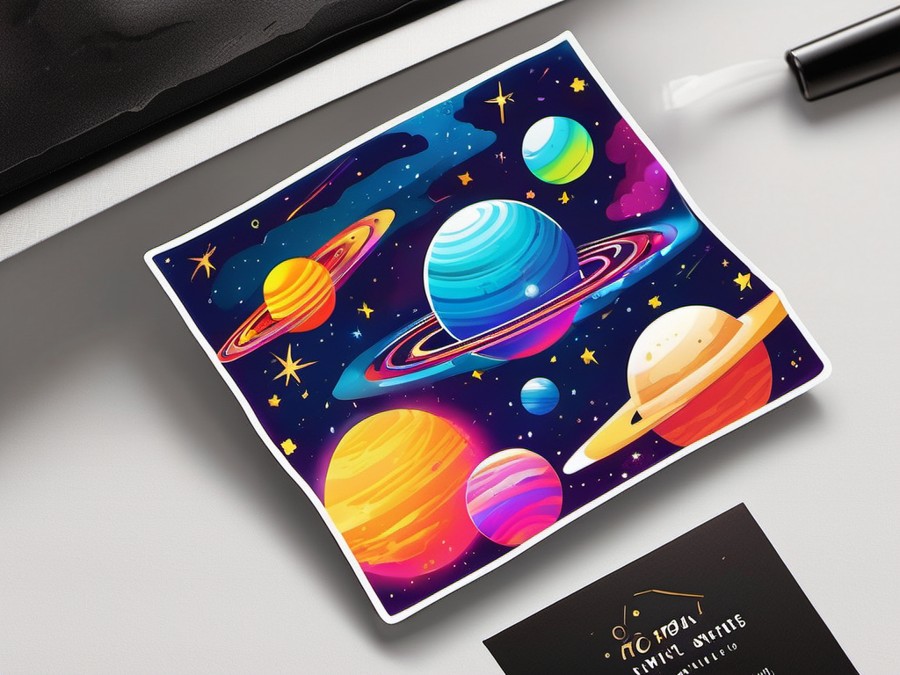· Charlotte Will · Blank Media · 8 min read
What is the best external hard drive for video editing?
Discover the best external hard drives for video editing in 2023. Learn how to choose between SSDs and HDDs, understand key features like transfer speed and capacity, and find top recommendations for various budgets. Optimize your video editing workflow with the perfect external hard drive.

Video editing is a demanding task that requires not just skill but also the right tools. One of the most essential tools is a reliable external hard drive. With the vast array of options available, choosing the best one can be a daunting task. In this article, we will guide you through the process of selecting the best external hard drive for video editing.
Why You Need a Dedicated External Hard Drive for Video Editing
The Importance of Speed and Capacity in Video Editing
When editing videos, speed is crucial. You need an external hard drive that can handle large file transfers quickly without any lag. Additionally, the capacity of your external hard drive matters greatly, especially if you work with high-resolution videos or large projects.
Avoiding the Pitfalls of Internal Storage
Internal storage can fill up quickly, and you don’t want to be in the middle of a project only to find out that your storage is full. External hard drives provide a flexible and expandable solution, allowing you to add more storage as your needs grow.
Understanding Your Needs: Types of Video Editing
Casual Editing vs Professional Use Cases
Not everyone requires the same level of performance from their external hard drive. Casual editors might get away with a standard USB 3.0 HDD, whereas professional editors need something faster and more reliable, like an SSD with Thunderbolt 3 connectivity.
The Impact of Video Resolution and Frame Rate on Storage Requirements
Video resolution plays a significant role in determining storage needs. For example, 4K video requires much more space than standard HD video. Similarly, higher frame rates result in larger file sizes. Make sure to calculate your storage requirements based on the resolution and frame rate you typically work with.
SSD vs HDD: Which is Better for Video Editing?
The Speed Advantage of SSDs
Solid State Drives (SSDs) offer significantly faster read and write speeds compared to traditional Hard Disk Drives (HDDs). This speed advantage is crucial for video editing, as it allows you to render and export projects faster.
HDDs for Large Capacity on a Budget
While SSDs are faster, HDDs offer more capacity for the price. If you’re on a tight budget and need to store a large amount of data, an HDD might be your best bet.
Transfer Speed: What to Look For
USB 3.2 Gen 2 vs Thunderbolt 3
When it comes to transfer speed, you have a few options. USB 3.2 Gen 2 offers fast transfer rates, but for the fastest possible speeds, Thunderbolt 3 is the way to go. Thunderbolt 3 supports data transfer rates up to 40 Gbps, making it ideal for professionals dealing with large video files.
Real-World Speed Differences
In real-world scenarios, SSDs with USB 3.2 Gen 2 can transfer a 10GB file in about 40 seconds, while Thunderbolt 3 can do it in around 25 seconds. The difference might not seem huge, but for frequent and large transfers, every second counts.
Capacity: How Much Storage Do You Really Need?
Calculating Storage Requirements for Different Video Formats
The amount of storage you need depends on the video format and resolution. For example, 4K video at 60 fps can consume up to 30 GB per minute of footage. Make sure your external hard drive has enough capacity to handle your projects comfortably.
Future-Proofing Your External Hard Drive Purchase
It’s always a good idea to future-proof your purchase. Consider buying an external hard drive with more capacity than you currently need. This way, you’ll be prepared for any future upgrades in your video editing workflow.
Top Features to Consider in an External Hard Drive for Video Editing
Transfer Speed and Read/Write Speeds
Fast transfer speeds are essential for video editing. Look for external hard drives with high read/write speeds to ensure smooth performance.
Portability: Size and Weight Matter
If you’re planning to edit on the go, portability is crucial. Portable SSDs like Samsung T7 Touch are lightweight and compact, making them ideal for travel.
Durability: Shock Resistance for On-The-Go Editing
For those who edit in the field, shock resistance is a must. Rugged external hard drives like Seagate FireCuda are built to withstand bumps and drops, ensuring your data stays safe.
Connectivity: USB-C and Thunderbolt Options
Modern laptops often come with USB-C ports. Having an external hard drive with USB-C connectivity ensures compatibility and convenience. For even faster speeds, consider a Thunderbolt 3 drive like WD My Passport SSD.
RAID Configuration for Data Redundancy
If you’re working on critical projects, consider an external hard drive that supports RAID configuration. RAID can provide data redundancy, protecting your files from loss.
Solid State Drives (SSDs) Recommended for Video Editing
Seagate FireCuda Gaming SSD

The Seagate FireCuda Gaming SSD is a powerful option. It offers high capacity and speed, making it ideal for professional video editors. Its rugged design ensures durability, perfect for those who work on the go.
WD My Passport SSD
The WD My Passport SSD is compact and portable, making it easy to carry around. It’s an affordable option that doesn’t compromise on performance, with fast transfer speeds and reliable connectivity.
Samsung T7 Touch
The Samsung T7 Touch is known for its portability and security. With fingerprint scanning, you can keep your data safe while on the go. Its speed and reliability make it a top choice for video editors.
Hard Disk Drives (HDDs) for Those on a Budget
Seagate Expansion Portable
The Seagate Expansion Portable is an affordable option with high capacity. It’s plug-and-play, making it easy to use straight out of the box. With USB 3.0 connectivity, you get decent transfer speeds for your money.
WD My Passport Ultra
The WD My Passport Ultra offers a balance of capacity and price. Its USB-C connectivity ensures modern compatibility, making it a versatile choice for video editors on a budget.
Toshiba Canvio Ready
The Toshiba Canvio Ready is reliable and compact. It provides good performance at an affordable price, making it a suitable choice for casual video editors.
How to Choose the Best External Hard Drive for Your Needs
Prioritizing Speed vs Capacity
When choosing an external hard drive, consider what’s more important to you: speed or capacity. SSDs offer faster speeds, while HDDs provide more storage for the price.
Balancing Portability with Durability
If you travel a lot, prioritize portability and durability. Look for external hard drives with lightweight designs and shock resistance to protect your data from bumps and drops.
Considering Your Budget and Long-Term Needs
Budget is always a factor. However, remember to consider your long-term needs as well. It might be worth investing a bit more for an external hard drive that will serve you better in the future.
Setting Up Your External Hard Drive for Video Editing
Formatting the Drive for Optimal Performance
Before using your external hard drive, make sure to format it properly. Formatting ensures that the drive is optimized for your specific needs and operating system.
RAID Configuration for Data Backup
For critical projects, consider setting up your external hard drive in a RAID configuration. RAID can provide data redundancy, protecting your files from loss in case of a drive failure.
Real-World Examples: How Professionals Use External Hard Drives
On-Set Editing with Rugged Drives
Professionals working on film sets often rely on rugged external hard drives like the Seagate FireCuda to ensure their data stays safe despite the rough conditions.
High-Speed Workflows for 4K and 8K Video Editing
For high-resolution video editing, external SSDs with Thunderbolt 3 connectivity, such as the WD My Passport SSD, are essential. They provide the high speeds needed for seamless 4K and 8K workflows.
Conclusion
Choosing the best external hard drive for video editing involves considering your specific needs and balancing speed, capacity, portability, and durability. Whether you’re a casual editor or a professional, investing in a reliable external hard drive will significantly improve your video editing workflow.
FAQs
Can I use an external hard drive for video editing on both Mac and Windows? Yes, many external hard drives are compatible with both Mac and Windows. Look for drives formatted with exFAT or NTFS if you need cross-platform compatibility.
How do I ensure my external hard drive is compatible with my video editing software? Most modern video editing software works well with external hard drives. However, make sure your drive has sufficient speed and capacity to handle the software’s demands.
What happens if I run out of storage space during a project? Running out of storage space can disrupt your workflow. Consider using cloud storage as a backup solution or investing in an external SSD with more capacity.
Should I backup my video files on multiple external hard drives? Backing up your data on multiple external hard drives is a good practice to ensure you don’t lose any crucial files. You can use tools like RAID configuration for added data redundancy.
Is it worth investing in an external SSD even if I’m on a tight budget? Yes, it is worth investing in an SSD if you can afford it. The speed advantage of SSDs can significantly improve your video editing workflow, especially for large projects or high-resolution videos. For more insights on budgeting your storage solutions, check out our article on “What is the best way to backup data using an external hard drive?“.




